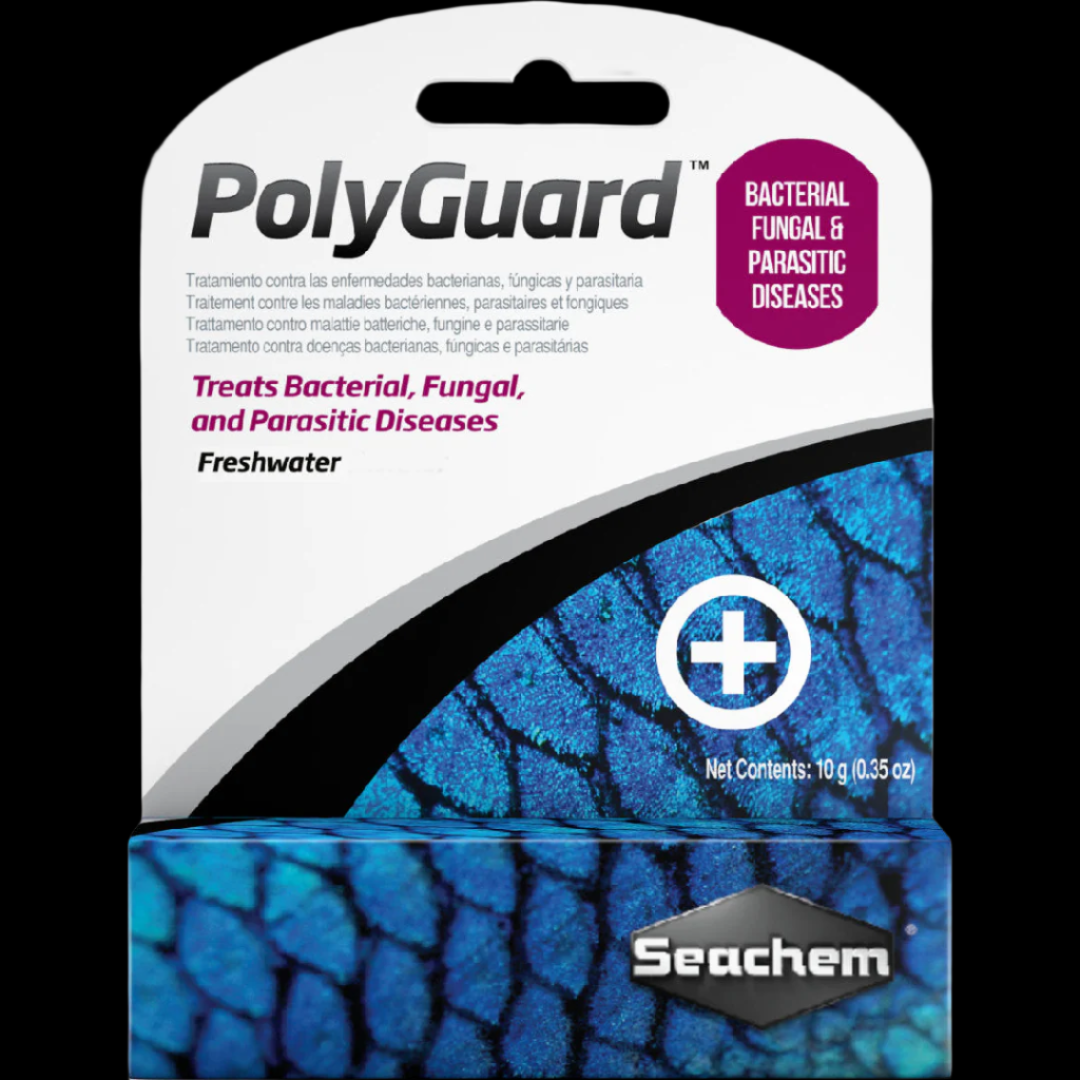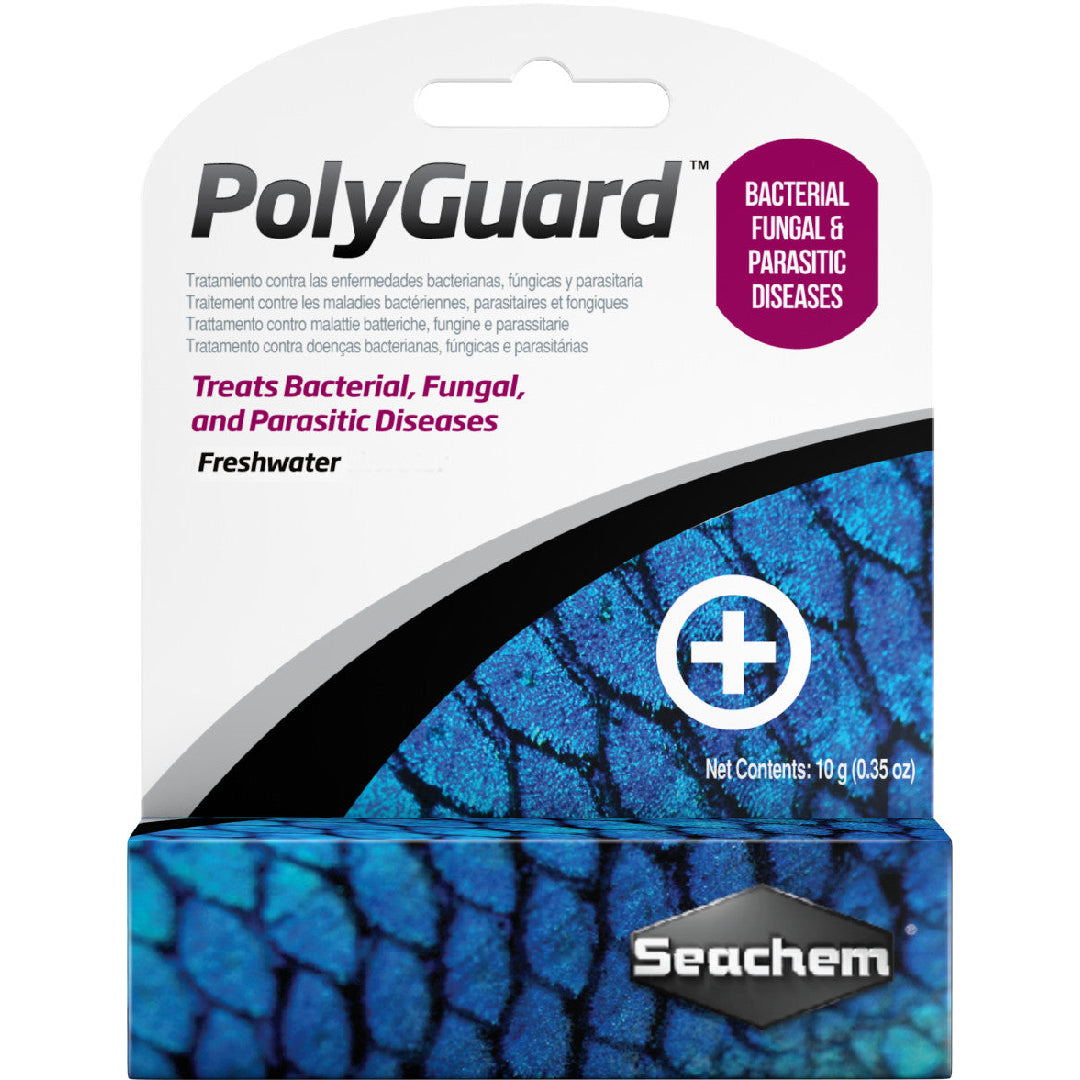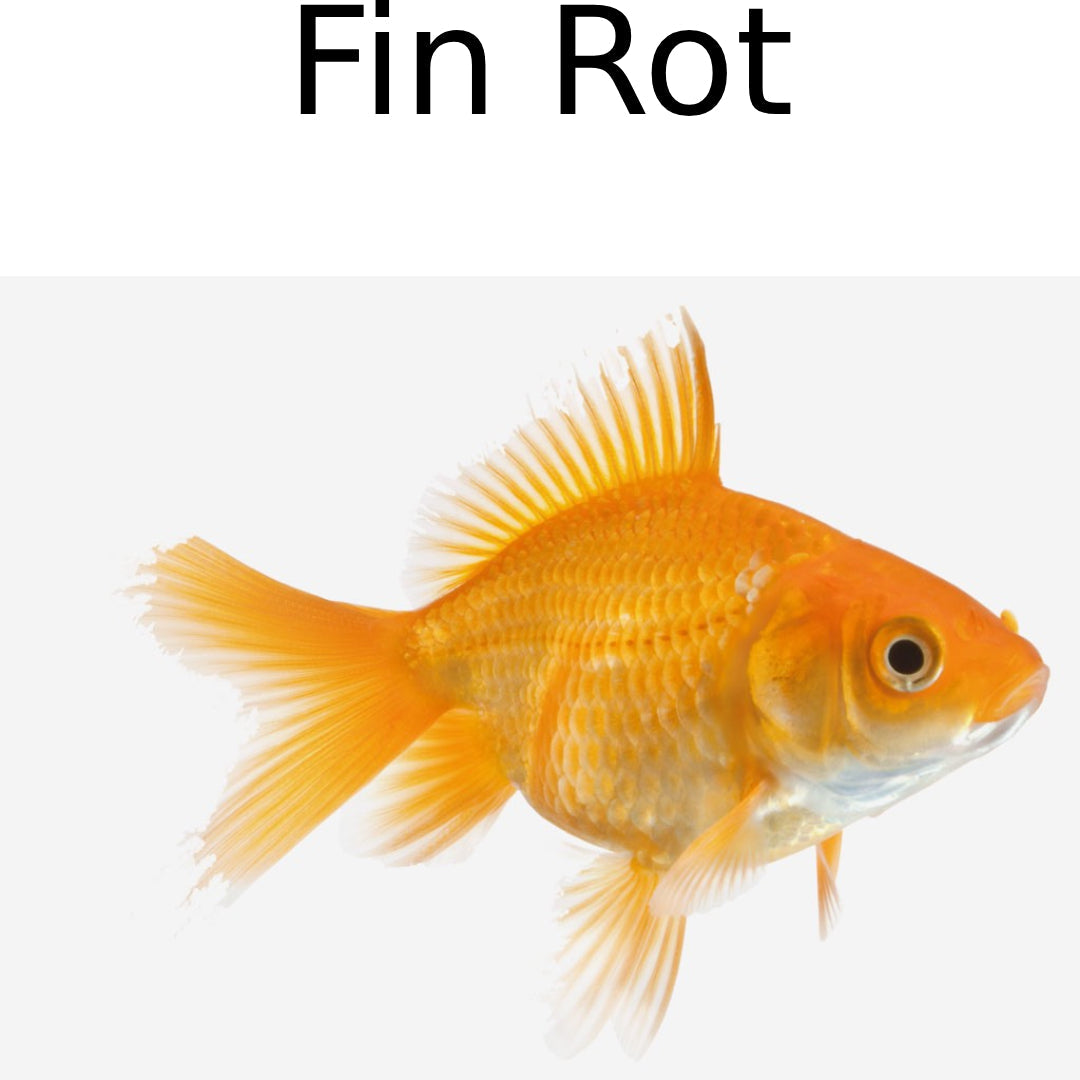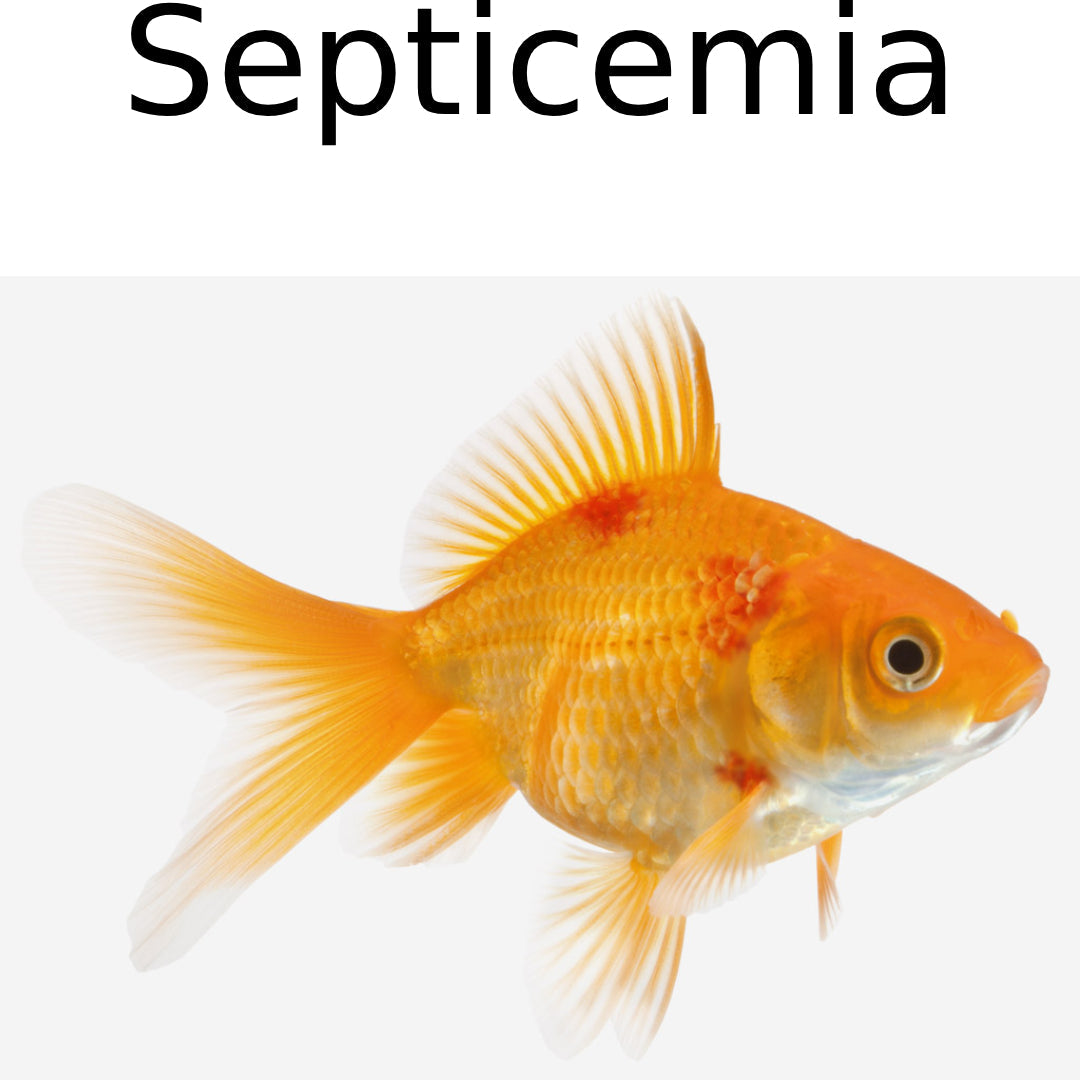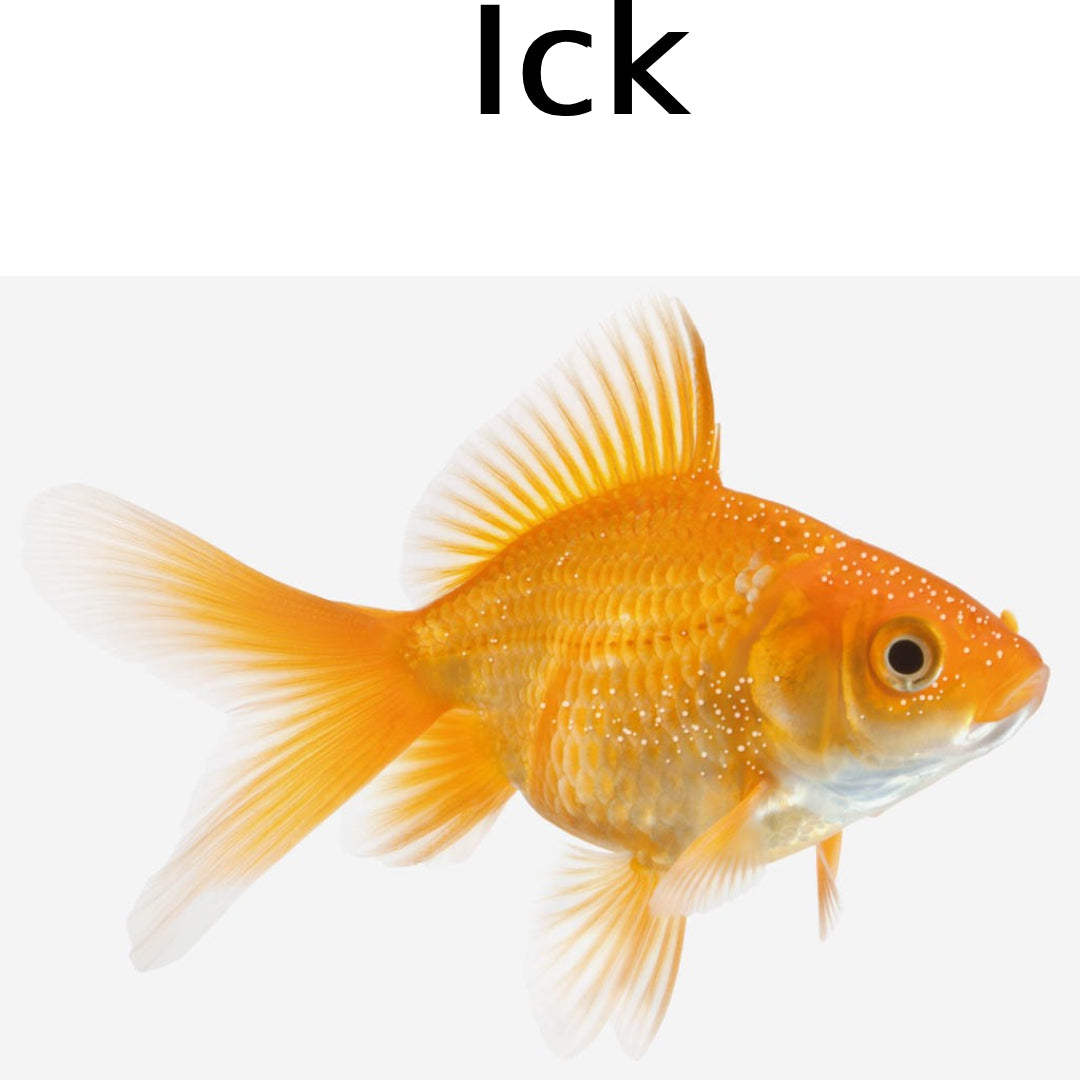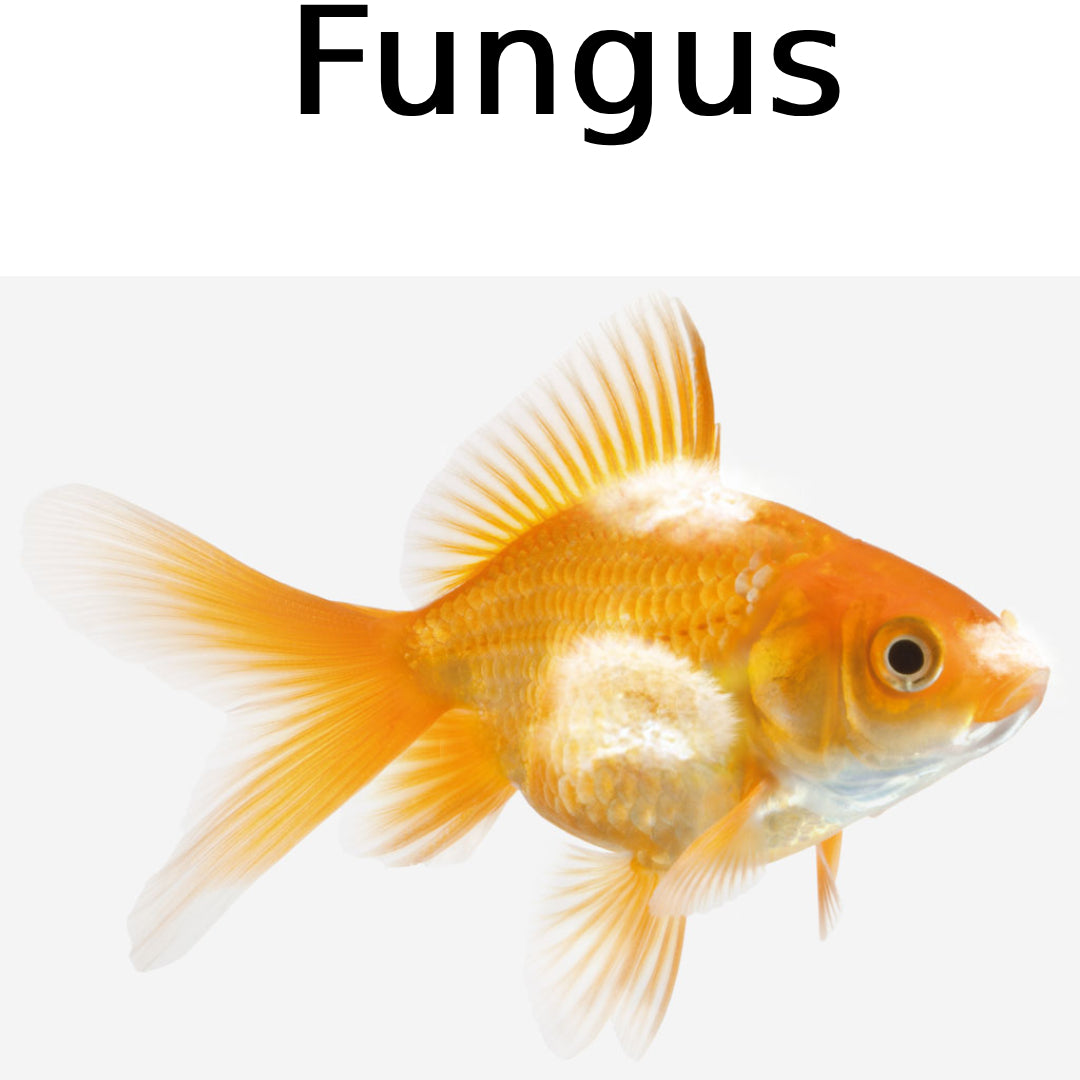Seachem PolyGuard Medication
Seachem PolyGuard Medication
SKU:000116076203
Low stock: 5 left
Couldn't load pickup availability
.4oz
PolyGuard™
- Treats bacterial, fungal, and parasitic diseases
- Very broad spectrum freshwater medication
- Good choice when unsure of the disease
PolyGuard™ is the single most effective medication to keep freshwater fish free of disease! It is an effective treatment and safeguard against all prevalent bacterial, fungal, and parasitic diseases of exotic fish. For use in freshwater or marine aquaria.
When our pets are sick, we immediately want to reach for the most powerful medication on the shelf. However, sometimes the right choice to prevent stress is to opt for a gentler medication at first, especially with less severe infections. PolyGuard is among Seachem’s strongest medications, and is best used when you are unsure what disease you are treating or when the fish is suffering from multiple infections.
Active ingredients: sulfathiazole (36%), malachite green (1.9%), nitrofurantoin (0.14%), nitrofural (0.14%), quinacrine dihydrochloride (0.27%). Inactive ingredients: excipients (61%)
PolyGuard™ is appropriate for treating a variety of bacterial, fungal, and parasitic diseases of exotic fish. Below are some of the more common diseases treatable with PolyGuard™. Be aware that many diseases and infections share similar physical and behavioral symptoms, e.g. clamped fins, lesions, loss of appetite.
Treats for:
Fin Rot:
Bacterial infection
Fins appear shredded, frayed, or decaying. Fin Rot is frequently mistaken for damage from fin-nipping fish. Contrary to the name, this is actually caused by bacteria, not fungus.
Suggested Treatment Period:
7 days or until infection clears
Special Considerations
Fin Rot is often found as a secondary infection (that’s an infection that started because the fish was already sick). Make sure to check for additional infections.
Hemorrhagic Septicemia:
Aeromonas hydrophilia
Reddish streaks in the fins near the body or under scales. Common in goldfish. Associated with overcrowding and stress, particularly in goldfish and koi. It can also be caused by a virus.
Suggested Treatment Period:
1 week
Special Considerations
This infection is strongly linked to crowding and poor water conditions. Make sure your fish have clean water and plenty of space.
Ick:
Ichthyophthirius (freshwater) / Cryptocaryon (saltwater)
Looks like salt sprinkled on the fish’s body and fins. Usually accompanied by twitching, flashing, and other signs of stress and irritation. Several parasites are grouped under this name, but the symptoms are almost identical. Ich is among the most common infections of fish, and is entirely treatable with diligence and attention to water quality.
Suggested Treatment Period:
14 days
Special Considerations
It is very important with this parasite to continue dosing for the full treatment period. A break in the medication allows the parasite to multiply and reinfect the fish.
Mouth Rot:
Columnaris
Damaged fins, ulcers and yellowish patches on gills, tissue on head and mouth eaten away. This infection appears gruesome, but is entirely treatable. It is common to see fungus-like tufts around the face and mouth in addition to deterioration of tissue. It is essential to catch this disease early to prevent long-term damage.
Suggested Treatment Period:
1 week
Special Considerations
Columnaris is very contagious. If possible, remove the infected fish to treat separately in a hospital tank.
Fungus:
Cotton-like tufts of white fiber. Almost always a secondary infection (appears when fish is already infected with a disease). True fungal infections, while unsightly, generally do not pose an immediate danger to fish.Suggested Treatment Period:
1 week or until fungus clearsSpecial Considerations
Fungus is relatively easy to treat and almost never fatal on its own. However, it tends to appear as a secondary infection, meaning there is a more serious disease causing the fish to be susceptible to a fungus.Share
